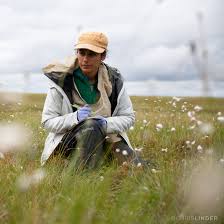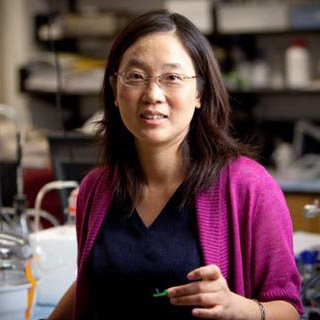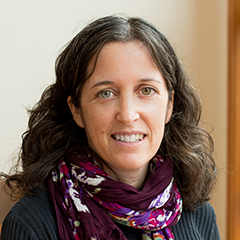Project Abstract
The Arctic contains the largest amount of stored carbon of any habitat type. It is also the most rapidly warming global region. Warming temperatures, along with increasing fire frequency and extent, may amplify global climate change by increasing carbon-based greenhouse gas (GHG) emissions from Arctic soils. Current abilities to predict future arctic carbon storage and release dynamics remain limited due, in part, to a lack of on-site soil GHG sensors that can operate over Arctic winters. To advance knowledge of the processes regulating arctic soil carbon storage and release, this collaboration between California Polytechnic State University, Oakland University, Wayne State University, and the Woods Hole Research center will develop GHG sensors that are refined to operate under variable soil conditions. The chemical measurements from these sensors will be integrated with a model that captures the biological interactions that govern carbon and nutrient cycling in arctic tundra systems. This cross- disciplinary collaboration will advance soil sensor technology, generate novel arctic system data, and improve models of how the Arctic is responding to fire and warming. The proposed project will be incorporated into teaching activities and through integration with the Polaris Project, an NSF-supported arctic undergraduate research program that prioritizes recruitment of students from underrepresented groups.
Fundamental soil science challenges include the need to develop GHG sensors that can continuously operate below freezing temperatures within soil profiles and the improvement of next-generation mechanistic biogeochemical models to project soil processes which vary in space and time. The primary objective of this research is to advance understanding of the processes regulating the sequestration and release of carbon and nitrogen from arctic soils by integrating fine-scale GHG measurements generated by novel, low-disturbance, and low-power in situ GHG sensors that can operate continuously under variable soil conditions with the Stoichiometrically Coupled, Acclimating Microbe-Plant-Soil (SCAMPS) model. This research, which integrates sensor development with established biogeochemical data collection and mechanistic modeling, will help to improve understanding of how arctic terrestrial heterogeneity across fine spatial and temporal scales affects the timing, magnitude, and form of carbon exchanged between permafrost- dominated soils and the atmosphere under rapidly changing climate conditions and extreme events. The in situ soil sensors will be among the first multimodal gas sensors that can function continuously at arctic soil temperatures, providing multiple GHG measurements with high sensitivity and specificity at low cost and low power. These soil sensors can ultimately be distributed in various ecosystems to study the dynamic changes occurring in the Arctic and other critical soil environments. This research will advance understanding of carbon and nutrient cycling in the Arctic by refining and validating novel multimodal sensors deployed to continuously measure soil GHG production at multiple depths across low Arctic field sites with varying wildfire histories. In addition to breakthroughs for arctic research, this project will generate technological innovations that will advance scientific understanding in the sensor research community and drive technology toward the long-term goal of monitoring the signals in the soil.
Logistics Summary
This collaboration between Sistla (2034323, LEAD, Cal Poly), Natali (2034304, WHRC), Zeng (2034230, Oakland U), and Xu (2034245, Wayne State) will conduct field sampling and instrument deployment focused within three sites in Alaska – a 2015 burn scar, 1972 burn scar, and in an area that has not burned in the past 70 years ('unburned’ site). These sites will all be accessible from the established field site, within the vicinity of two EC towers (one in the 2015 burn and one in the unburned area). The project will use existing infrastructure currently used by the Polaris Project (Natali; NSF grant 1915307) at Landing Lake, including tent platforms and boardwalk. Fieldwork will be completed over four years (2021-2024). In 2021 and 2022, a field team of six will collect core samples at Landing Lake, in the YKNWR out of Bethel, Alaska. In 2023 and 2024 a field team of two will conduct two summer trips and two winter trips to collect data and maintain instruments. During the last year of the project, 2025, the NSF contractor will remove boardwalk, tent platforms and any remaining instrumentation at completion of the project.
Season Field Site
2021 Alaska - PYP Camp
2022 Alaska - PYP Camp
2023 Alaska - PYP Camp
2024 Alaska - PYP Camp
2025 Alaska - PYP Camp
Project Location
Dates
-Location
Landing Lake, AK; Bethel, AKMembers
Principal Investigator

Principal Investigator

Principal Investigator

Principal Investigator

